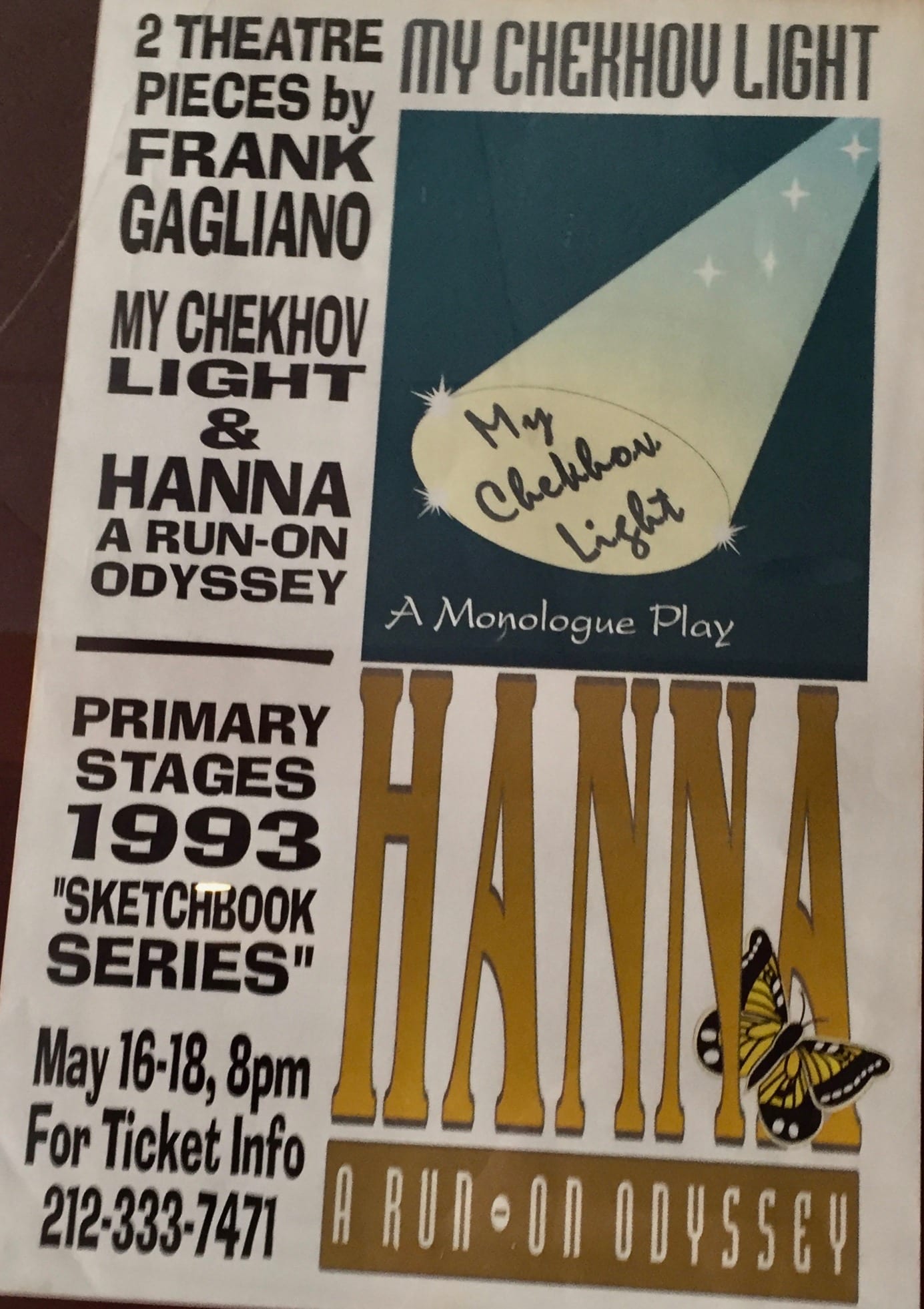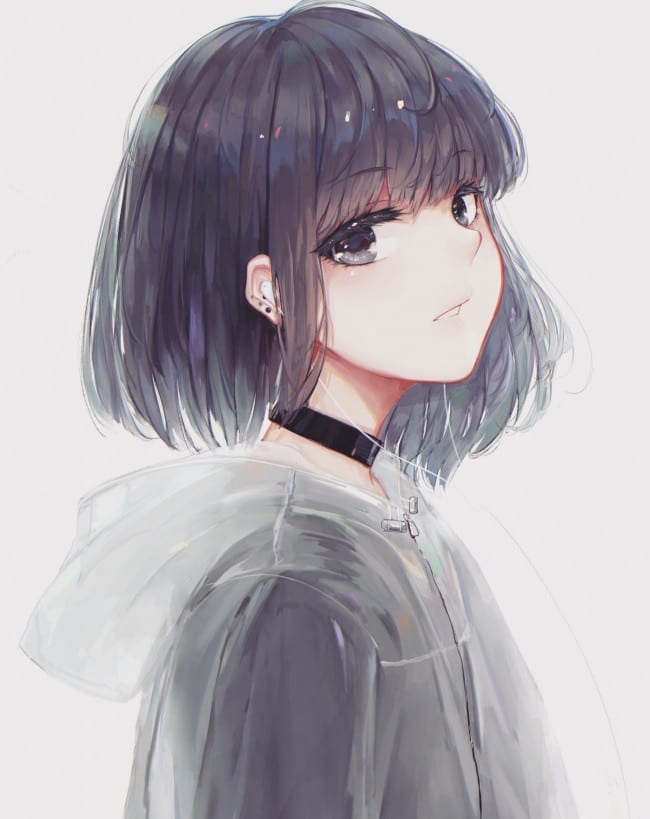

HANNA: A Run-On Wordplay Tone Poem
[Historical HANNA Notes from FG,
Followed by DOWNLOAD link
to Complete Revised HANNA text]
Way back in my University teaching days — to loosen the subconscious and let it find its own form —I took one of my run- on writing exercises with my playwriting students.
I pitched this phrase to the class: “when hanna left the
garage. . .” — and told the class to start writing and not stop until they dried up, or I stopped them. My text turned out to be the first draft of Hanna, that became a 3-part run-on piece for narrator, solo movement, and percussion. I didn’t know then that that was what it would become.
Sara Romersberger, a then colleague, devised, choreographed and made it into a theatre piece. In 1993 — under the guidance of an extraordinary student, Brian Caudill (he designed the poster and did all the promotion) — we took the piece to Primary Stages in New York City for three performances. It was part of a double bill, with me giving a reading of my then new piece, “My Chekhov Light.”
At Primary Stages, Sara performed the role of Hanna. The narrator was John Preston Mendenhall. Kevin Lloyd composed and played the percussion score. Sara, who had studied with Jacques Lecoq at his School of Physical Theatre in Paris, and was trained in dance, Commedia dell’ Arte, stage combat, was a stage director and organically built the piece in which she brilliantly performed. Sara also had great comic performance chops. A must for the role.
John Preston was equally brilliant— a master at what I call, “pressure shifts” — and who, in Hanna, vocally-shifted in every run-on linguistic and image-changing phrase.
And Kevin Lloyd’s organically built musical score — and his playing the music — was stunning. Recalling the original incarnation, composer Kevin Lloyd wrote: “We performed on a raked stage at Primary Stages which was a huge challenge for Sara, given all the movement/dancing/ acrobatics involved in her performance. Preston, the narrator, stood downstage left and my setup was upstage right. I had close to 40 instruments and played standing up. The core included parts of a drum set and a vibraphone, but also included a forest of stands and a number of tables with cymbals, percussion instruments and sound effects of every kind.”
Three decades later, the HANNA text has surfaced again. And I’ve become interested in it again. Perhaps, because we are in the midst of this Covid-19 pandemic. . . and because these four depressing months (it’s 1 July 2020, as I write this) have pressure-shifted events so radically, so quickly, so often, so moment to moment — economically and politically — that the HANNA run-on journey seemed to be made for today. At least in form.
In addition, I’m at a stage of life where the events of my life flash back in fits and starts and could be labeled reverse pressure shifts.
So. I’ve reworked HANNA. Again. It’s a fun piece to work on.
Besides a general tweaking, I’ve found a more solid structure for the piece. The original HANNA ended on the same “yes” as it does now. Originally, I was obviously influenced by the James Joyce, Molly Bloom, 47 run-on pages that conclude his masterpiece, ULYSSES. But Joyce’s 47 page Molly Bloom run-on, begins with a “yes” and closes with an even more resounding “Yes.” I have decided in my new rewrite to start with a “no” and make Hanna’s three part journey, in her surreal morphing world, a journey to her new found “yes.” And I suppose that the “no” start was because I started the reworking from a sense of despair that I was feeling about the world.
When I first wrote HANNA, I had no idea that it would turn out to be the template for a theatre piece. Exploring it anew— and recognizing all the morphing that goes on — I’ve played with the notion that HANNA might be a blueprint for an anime cartoon. Here are some of the thoughts first HANNA narrator John Preston Mendenhall wrote:
“. . . Any animator with vision and passion for the piece could have a unique hit. Also as “unplugged” – audio only. As long as the narrator has the chops for the brisk cadence of pressure shifts and riffs, and is very specific, the fascination happens. But it sure was a blast to perform with Kevin and Sara!”
And Sara wrote: “Although I would love to see it animated I still remember the joy of performing the work, even if complicated by a raked stage. Working live I was fed by the voice of Preston, the narrator, that drove the action and the percussionist, Kevin, who punctuated the text and my actions and —(a plus)— who created a point of view with his sounds and choice of instrumentation. It was so collaborative as we riffed off of one another and worked through the run-on text. A dream role for a movement specialist.”
So. Perhaps HANNA is merely a (hopefully, fun?) piece for my new website, and that each visitor to this new site, www.gaglianoriff.com — “my storage bin for all of my creative work” —can create his or her own Sara Romersberger-like theatre pieces for a theater of their own minds eye.
As my students used to say: “Whatever.” In any case, here it is:
The newly tweaked “HANNA.”
Hanna© (Revised, 2020)
FG
